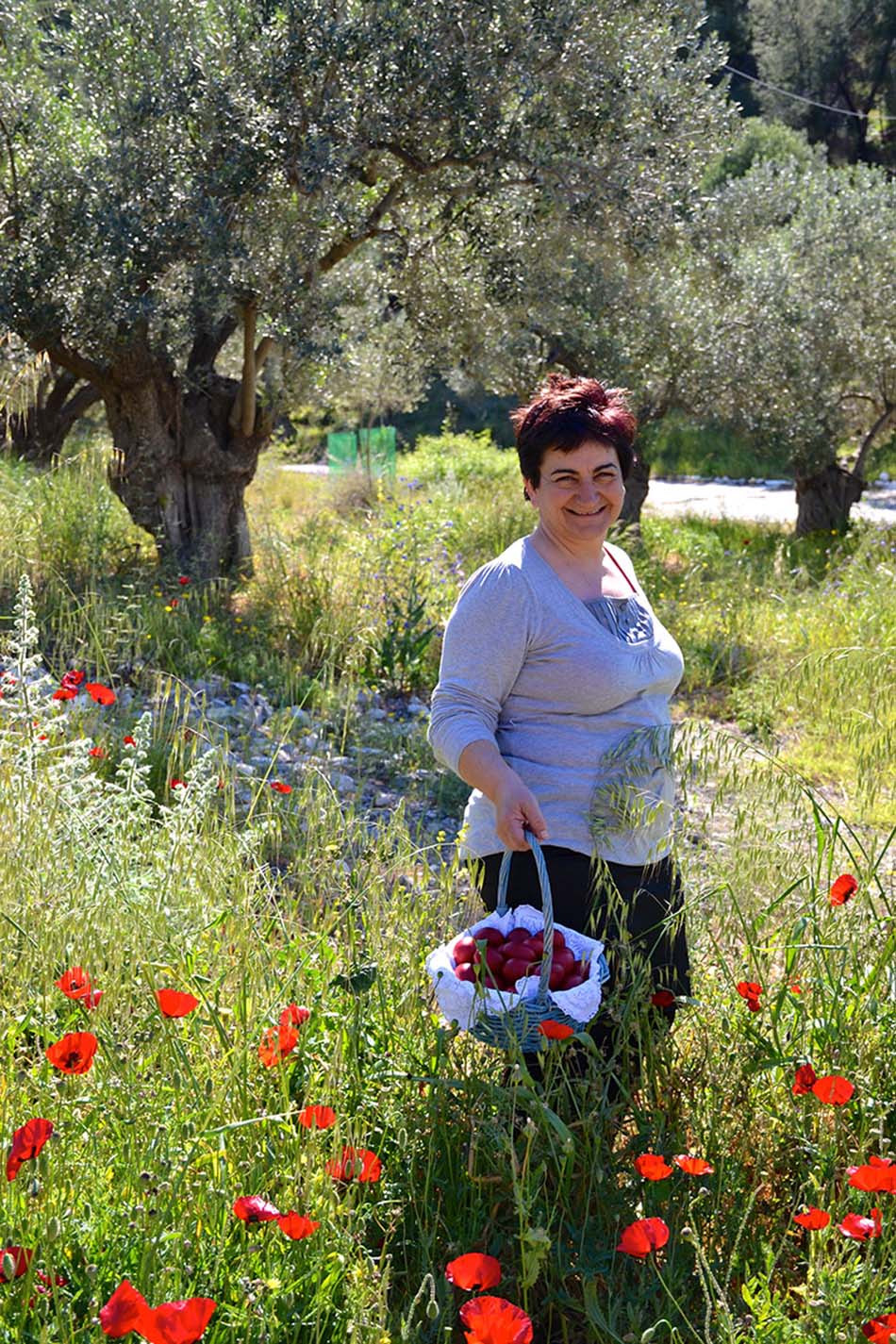The red eggs of Greek Easter

- On 12 Apr 2015
- In Blog
- By Katerina Sakelliou
- 4 Comments
Photographer: Annette Spaan
The egg was a symbol of rebirth of the earth in Pagan celebrations of spring. Adopted by the early Christians it became a symbol of the resurrection of Jesus at Easter.
Red eggs are perhaps the brightest symbol of Greek Easter, representing the blood of Christ and rebirth. We also dye eggs in other colors, but rarely will a Greek Easter be celebrated without lots of red eggs. In Greek we call them kokkina avga (pronounced KOH-kee-nah ahv-GHAH).
My family and I always dyed eggs red for Easter. We played a traditional game called “egg-tapping”. In this game each person held a red egg and took turns tapping their eggs against the others, trying to crack their egg. The person left with the unbroken egg was the winner. My uncle Aggelos always cheated. He would dye a wooden egg red and would therefore always beat all the children in the egg-tapping game. He loved our faces looking at him like he had super powers, powers that made his Easter red egg unbreakable.
Dyeing red Easter eggs in an organic way
Commercial dyes are available, but this old - fashioned natural method creates red eggs with a deep rich color. The following recipe is for one dozen red eggs:
You need 12 medium - to - small eggs from happy chickens!!
Wash the eggs carefully. In a stainless saucepan, place skins of 15 red onions and 2 tablespoons of white vinegar in 4 1/2 cups of water and bring to a boil. Lower heat and simmer, covered, for 30 minutes. Strain dye into a glass bowl, and let cool to room temperature. It takes a red-brown color. In a stainless saucepan add the cooled strained dye and eggs at room temperature. The eggs should be covered by the dye. Bring to a boil over medium heat.
When the dye comes to a boil, reduce heat to low. Cover, and simmer for approximately 15 to 20 minutes. The eggs should have a nice, red, marbled color. Remove eggs with a slotted spoon and cool on kitchen paper. When cool, pour a small bit of olive oil on a piece of cloth and polish the eggs, brightening the color and giving them a beautiful sheen. Refrigerate until time to use.
Tips:
– Do not use any porous (wood, ceramic, plastic, etc.) spoons or cooking materials as they can be colored by the dye.
– If stainless cookware and utensils get colored by the dye, wash with regular detergent and a small amount of chlorine. Rinse very well.
Red Easter Poppy, the delicate flower
The blood of Christ is not only symbolized by the red Easter eggs, there is also a connection to red poppy’s.
The Greek goddess of the harvest, Demeter, created the poppy after the loss of her dear daughter, Persephone. The poppy flower had special properties that helped the anguished Demeter fall asleep. The twin brothers Hypnos and Thanatos (gods of sleep and death) are typically depicted wearing crowns of poppies or carrying poppies in their hands. In the Greek Orthodox Church, crimson poppies represent the blood of Christ on the cross on his journey to Golgotha. We learned that poppies were not colored until Christ’s blood fell on them, dyeing them all red. Since then, they are the proud flowers of Christ.
All of Greece has dyed their eggs red this week and will be celebrating Easter today. Let the games of egg tapping begin!
Christos Anesti! – Christ has risen!
Chronia Polla! A wish for many years to come or long life!
Do you want to cook with Katerina at Odyssey?
Click here for more information!
Leave us your comment
Katerina's Kouzina Blog Post



wonderful!
Thank you Marilee!
Bravo! Are the red eggs in your pictures really just from using the red onion skins? I have tried the skins before same exact method but no luck in getting such a deep red color and they were more marbled..which they dont look at all in your pictures. Euxaristo !
Hi Ioanna.
I am so sorry for my so late and completely outdated response, Easter came and gone and here I am replying to the red egg comment. So sorry. Life has been very strange the last weeks.
To reply to your comment the pictures are not from the eggs done with the onion skins. You are correct when they are done with the onion skins they are more marbled.
I hope you had a nice Easter and that you and yours are well.